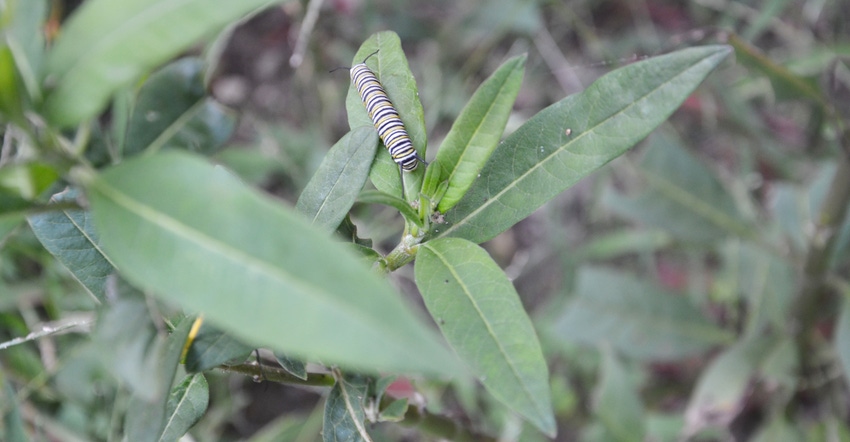September 6, 2018

Maybe it’s just today’s society, agriculture included. Perhaps it’s this current generation of young people. Or maybe it’s always been this way, just not this obvious. People want the reward without working for it — the gain without the pain. They want to win the game without enduring two-per-day practices, or to put it in ag terms, they want the purple ribbon in the show ring without spending countless hours working their animals at home.
Maybe it’s time people reflected on the story of the monarch butterfly, believed by many to be the most beautiful of all the butterflies. Some far-out environmental groups claim agriculture has led to the demise of this species by killing its habitat, milkweeds. Some ag companies have responded with campaigns to assist the monarch.
Here’s a true story — my effort to help butterflies.
Start with plants
Last March my wife, Carla, and I ventured into southern Georgia with our daughter Allison, who lives in Atlanta. Allison is a plant lover, and we happened upon a plant fair. We bought her plants and I bought Carla two butterfly bushes — something she has always wanted. Fortunately, I didn’t plant them as soon as we arrived home. When it finally quit freezing at night, sometime in early May, I planted them. They’ve grown profusely, although we haven’t seen butterflies around them yet.
These bushes don’t necessarily attract monarch butterflies, but I had a plan for that. A volunteer helping prepare the local FFA chapter’s greenhouse for the FFA alumni plant sale last spring came across tropical milkweed seed. He grew two flats, and the alumni sold them at the plant sale. Before others snatched them up, I set back five little plants for myself. I planted them next to the butterfly bushes.
I wasn’t sure how the scrawny, tiny plants would turn out, but before I knew it they were 6 inches tall, then a foot, then 2 feet. By July they had petite, colorful blooms on the top of the plant. Wow, these were neat.
Then August came, and one day I found half the leaves gone on one of the plants. The next day all the leaves were stripped off a second plant. What was going on?
Then I remembered. The purpose of the tropical milkweed plants, also called butterfly plants, is to provide a food source to promote the monarch butterfly. It’s the only plant they eat. But it’s the caterpillar that feeds on the plant, not the butterfly.
Sure enough, when I looked, there were caterpillars on the leaves, munching away. They were the caterpillars that would become the butterflies.
Moral of the story
What I forgot myself, and what we didn’t tell unsuspecting buyers of those little plants, was that while the plants would be pretty, their purpose was to sacrifice themselves for the monarch butterfly. To get a monarch butterfly, there must be a caterpillar first. The ugly caterpillar eats the leaves, making the once-beautiful plants ugly. Then the caterpillar morphs into one of nature’s most magnificent creatures: the monarch butterfly.
Perhaps some people today — young and old alike, city, rural, even farm people — are too much like me last spring. They’ve forgotten that to get the gold, they must sacrifice first. It can be a hard lesson, but a valuable one.
I wonder how many people next spring will want their money back because the FFA alumni sold them plants that were destroyed by worms?
Comments? Email [email protected].
You May Also Like




